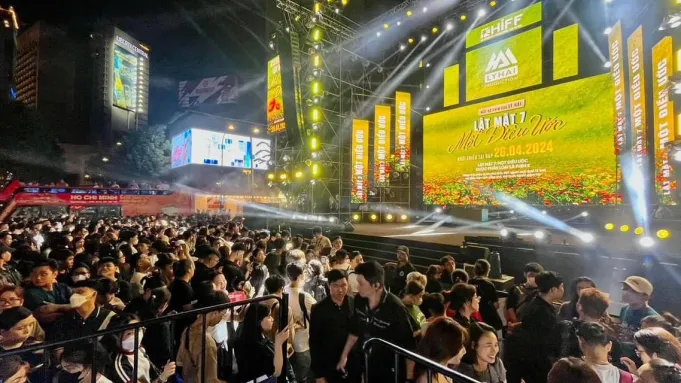How The Ho Chi Minh Film Festival Plans To Become Southeast Asia’s Top Event

By Sara Merican – DEADLINE

After wrapping its inaugural edition, the Ho Chi Minh Film Festival (HIFF) has set its sights on becoming the largest film festival in Southeast Asia.
Showcasing more than 100 films over eight days, the festival received over 280,000 visitors, including international guests, over eight days earlier this month (April 6-13).
Industry professionals present at the festival told Deadline that they were impressed by the scale and ambition of the festival, which included a script lab, workshop and project market and a “content and tech expo” focusing on new media and emerging technologies.
“It can be said to be a success, although there are still a few things we could have done better if we had more time to prepare,” HIFF Executive Director Pham Minh Toan told Deadline. “We are happy because most of the international friends who attended responded positively — what happened in Ho Chi Minh City over the eight days exceeded their expectations of a first-time film festival.”
Pham runs Vietfest, the event company behind HIFF. He has also organized several editions of the Ho Chi Minh City International Music Festival (HOZO). With government support through the Ho Chi Minh City People’s Committee and the city’s Department of Culture and Sports, the film festival wants to cement Vietnam as a top player in the regional film industry.
“An international film festival is a necessary push for the vision of Ho Chi Minh City becoming the center of Southeast Asian cinema in the coming years,” said Pham. “The international film festival will attract international filmmakers, studios and distribution companies to Ho Chi Minh City, thereby promoting the city’s film market to develop and integrate with the world.”
In 2023, Vietnam took the highest box office revenue in Southeast Asia, raking in just over $150M and easily surpassing Indonesia’s $114M. This is an exceptional figure, especially given Vietnam’s population of around 100 million people compared to Indonesia’s 277 million. In 2019, a year before the pandemic, Vietnam’s box office recorded $173M. Pham said that the Vietnamese film industry is well-positioned to grow rapidly in the coming years.
However, he pointed out several challenges that lie ahead for HIFF. The highest priority is building a major cinema center where large-scale movie events can be held. This year, the festival spread its programming across several venues, including the Sai Gon Opera House, Lam Son Park, Nguyen Hue Walking Street and other cinema theaters across Ho Chi Minh.
“The scale of HIFF is quite large with many films and activities, and we do not have enough infrastructure ready for such a scale, so we have to split it up across many different locations,” said Pham. “Therefore, the organization and operations are also more complicated.”
Several films were also removed from the final program due to censorship by local authorities. We hear the country’s censorship regulations required certain films to make edits before screening, but that there was not enough time for most to comply. In the end, just one was screened with the edits made. “We’re in Vietnam and must follow the policy here,” said Pham.
HIFF ran various programs, including a Southeast Asia competition, a first or second film competition and Vietnam Panorama. Filipino filmmaker Sheron Dayoc’s The Gospel of the Beast took home the festival’s Golden Star Award.
Singaporean director Nicole Midori Woodford won the Jury Prize for Last Shadow At First Light and Malaysian auteur Chai Chee Sum won Best Director for Oasis Of Now; the film also won the best actress prize for Ta Thi Diu. Chai Yee Wei’s Wonderland received two acting awards — best actor for Mark Lee and best supporting actor for Peter Yu.